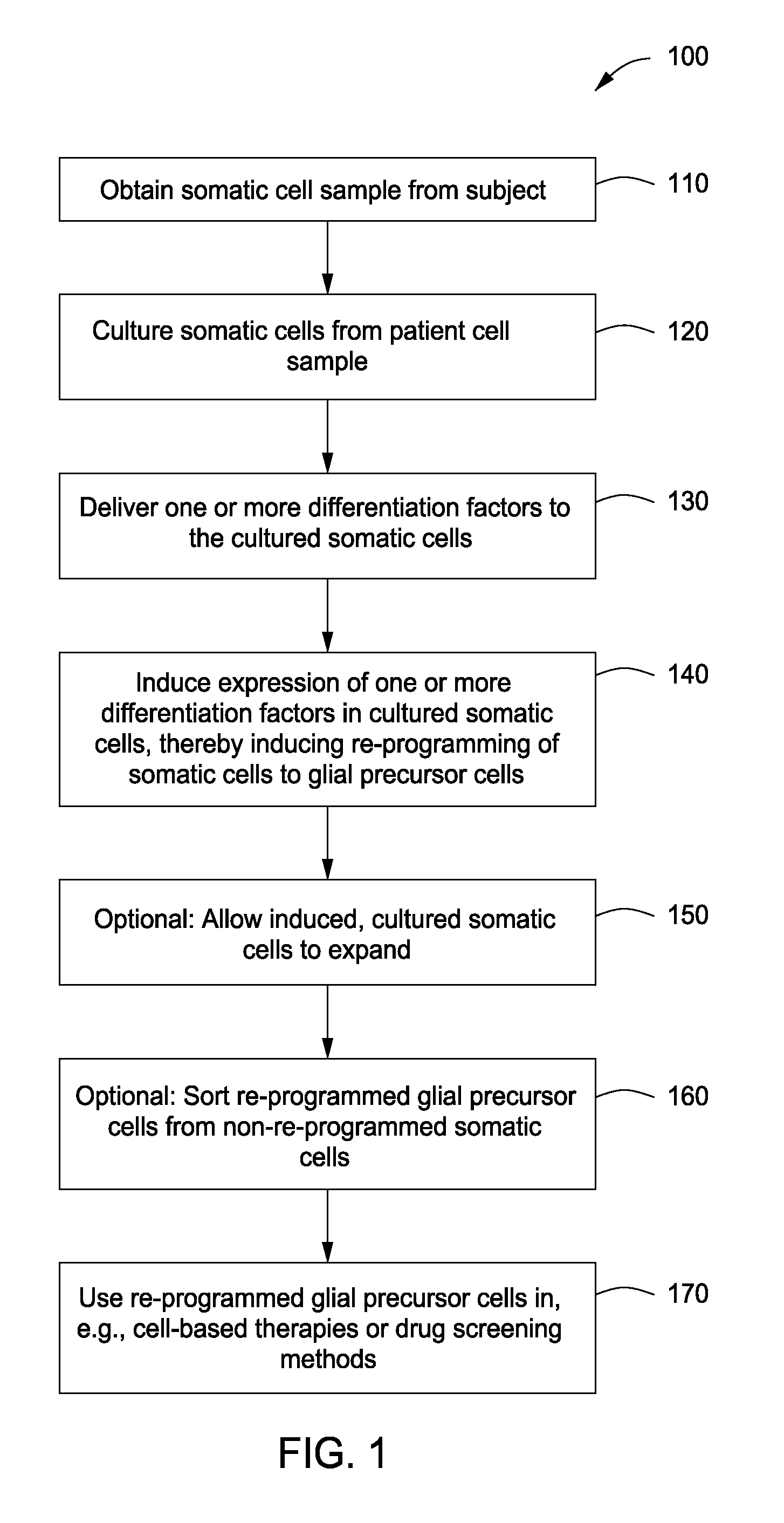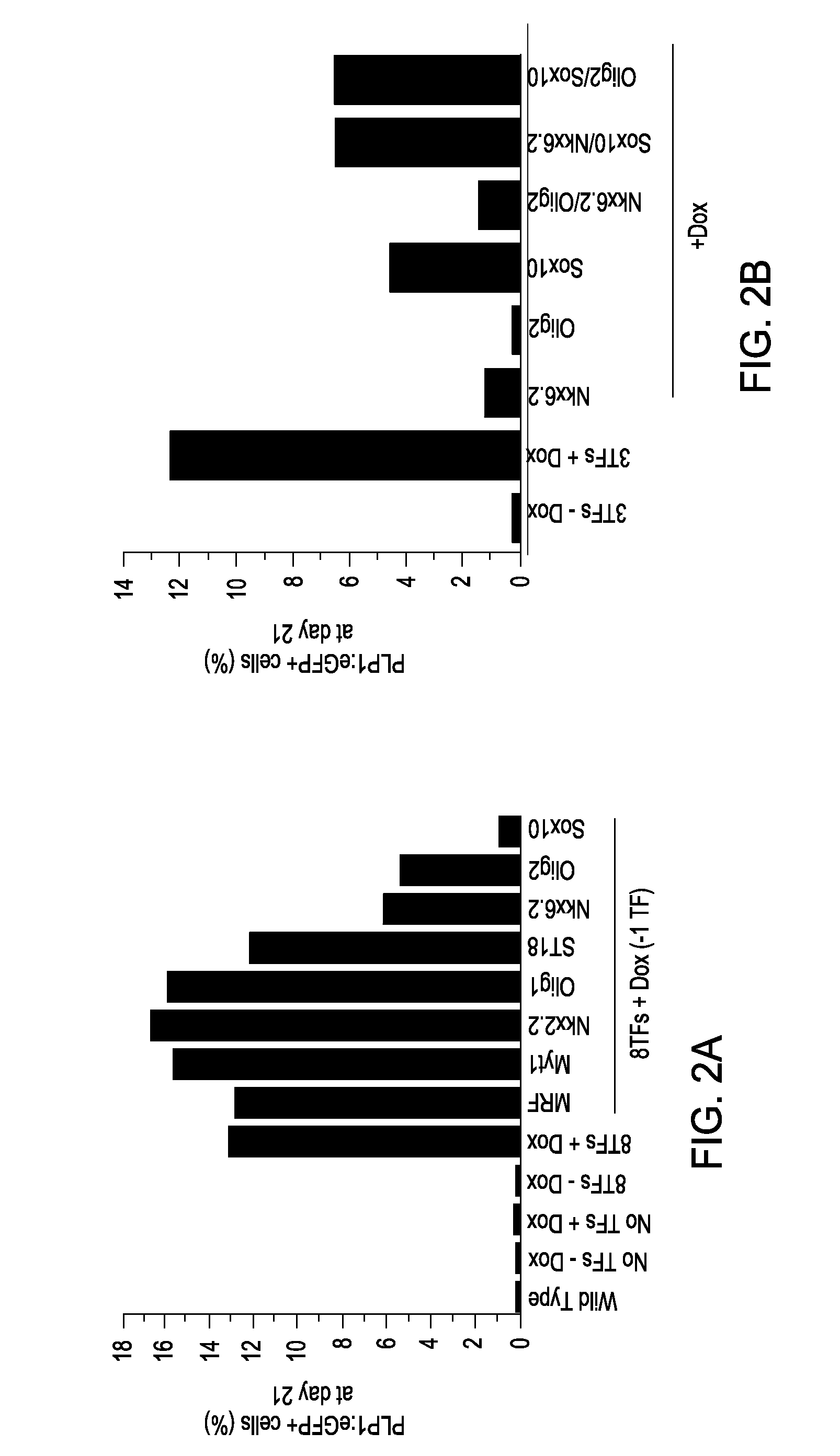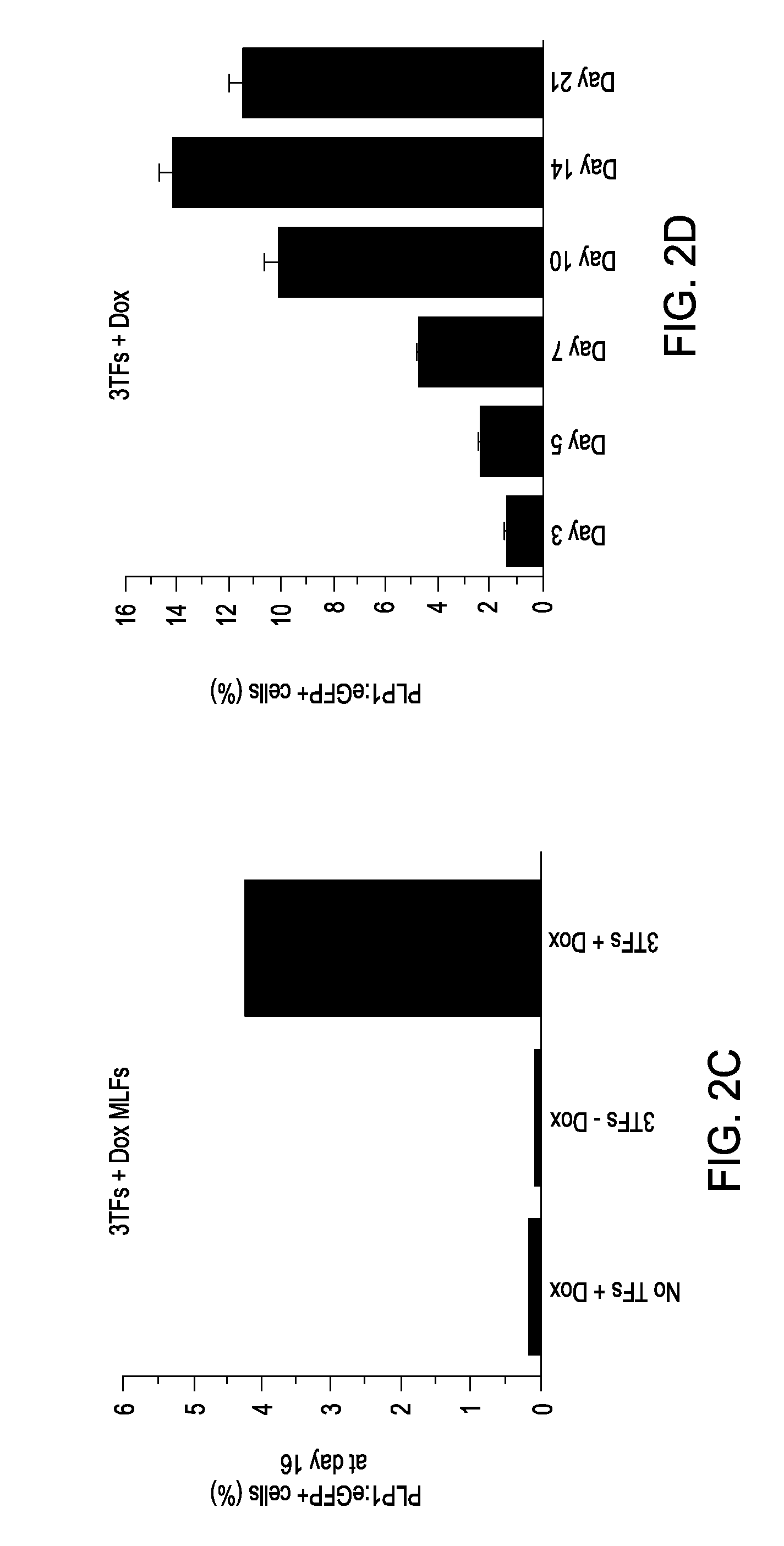Glial cells and oligodendrocytes produced by reprogramming somatic cells with Sox10, Olig2 and Nkx6.2
a technology of oligodendrocytes and somatic cells, which is applied in the field of reprogramming differentiated somatic cells into glial cells, can solve the problems of embryonic stem cell-based therapy complicated by complications, axon degeneration and neuronal cell death, and inadequate myelin repair
- Summary
- Abstract
- Description
- Claims
- Application Information
AI Technical Summary
Benefits of technology
Problems solved by technology
Method used
Image
Examples
example 1
Generation of OPCs from Fibroblasts
[0090]Isolation of PLP1:GFP / rtTA fibroblasts. Both mouse embryonic fibroblasts (MEFs) and mouse lung fibroblasts (MLFs) were generated from timed natural matings between PLP1:eGFP mice and reverse tetracycline-controlled transactivator (rtTA) mice (B6.Cg-Gt(ROSA) 26Sortm1 (rtTA*M2) Jae / J; Jackson Laboratory) at embryonic day 13.5 (E13.5). For MEFs, the head, spinal cord, and all internal organs were carefully removed to eliminate contamination with any neural precursors. The remainder of the tissue was cut into small pieces and dissociated using 0.125% trypsin-EDTA (Invitrogen). Cells were expanded for one passage and cryopreserved for future use. MLFs were isolated by dissociating pooled lung lobes using 0.125% trypsin-EDTA, expanded for two passages, and cryopreserved for future use. Both MEFs and MLFs were derived in DMEM supplemented with 10% fetal bovine serum (FBS), 2 mM glutamax, 1× nonessential amino acids, and 0.1 mM 2-mercaptoethanol.
[009...
example 2
In vitro Myelination by Fibroblast-Derived OPCs
[0105]Myelination analysis. The forebrain and cerebellum of early postnatal (P5) shiverer (C3Fe.SWV-Mbpshi / Mbpshi; Jackson Laboratory) or wildtype mice were dissected and 300 μm slices produced on a Leica Vibratome. Slices were cultured as described in Mi, et al., Ann Neurol, 65:304-15 (2009) in a DMEM / BME base with 15% Horse serum, Hong's N2 and PDGF-AA for three days. 5×104−2×105 iOPCs were manually injected with a pulled glass pipette into each slice and grown for an additional 10 days in culture. Slices were then fixed in 4% paraformaldehyde, treated with ice cold 5% acetic acid / 95% methanol, and assayed for MBP expression (Covance, SMI99; Jackson Labs, Biotin-anti-mouse IgG; Vector Labs, ABC; Sigma, DAB; or Alexa594 secondary antibody, 1:500).
[0106]Results. The function of iOPCs was further investigated by testing the ability of the iOPCs to myelinate axons of hypomyelinated shiverer (MBPshi / shi) mice, which completely lack MBP and...
example 3
In vivo Myelination by Fibroblast-Derived OPCs
[0107]Myelination analysis. PAST TENSE!!!The shiverer mutant mouse is used as a model system to demonstrate in vivo remyleination using the mesodermal cell-derived OPCs of the present invention. Congenitally hypomyelinated shiverer mice fail to generate compact myelin and die by 18-21 weeks of age. The model used is as described in US Pat App. No. 20080206209 and Windrem et al., Cell Stem Cell 2, 553-565, June 2008, both of which are incorporated by reference in their entirety.
[0108]Briefly, early post-natal (P1-P3) shiverer (Mbpshi / shi) mice serve as a host for the transplantation of fibroblast cell-derived OPCs produced as described in Example 1. Pups are anesthetized with isofluorane and 1.5 ul of a 167,000 cells / μl suspension in neural base medium is injected unilaterally to target the future corpus collosum. Injections are performed through the skull with a Hamilton syringe to a depth of 1.5 mm.
[0109]Mice injected with fibroblast-de...
PUM
| Property | Measurement | Unit |
|---|---|---|
| temperature | aaaaa | aaaaa |
| depth | aaaaa | aaaaa |
| thick | aaaaa | aaaaa |
Abstract
Description
Claims
Application Information
 Login to View More
Login to View More - R&D
- Intellectual Property
- Life Sciences
- Materials
- Tech Scout
- Unparalleled Data Quality
- Higher Quality Content
- 60% Fewer Hallucinations
Browse by: Latest US Patents, China's latest patents, Technical Efficacy Thesaurus, Application Domain, Technology Topic, Popular Technical Reports.
© 2025 PatSnap. All rights reserved.Legal|Privacy policy|Modern Slavery Act Transparency Statement|Sitemap|About US| Contact US: help@patsnap.com



